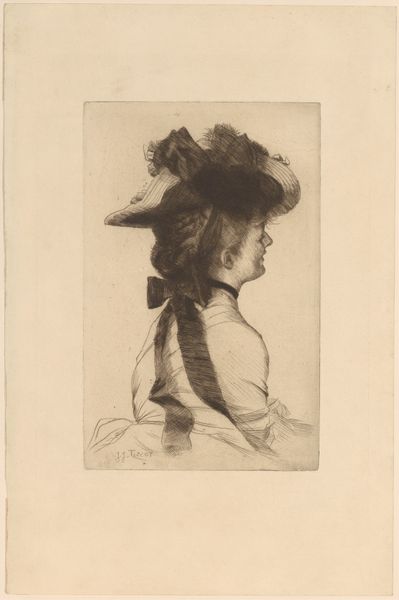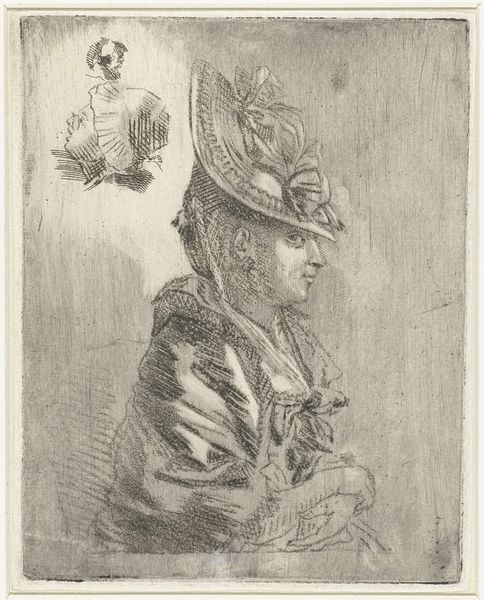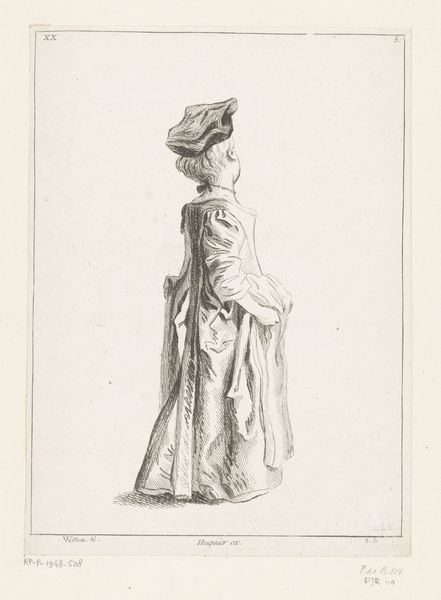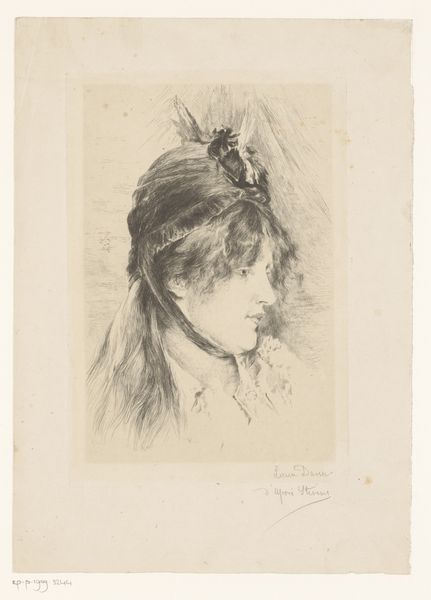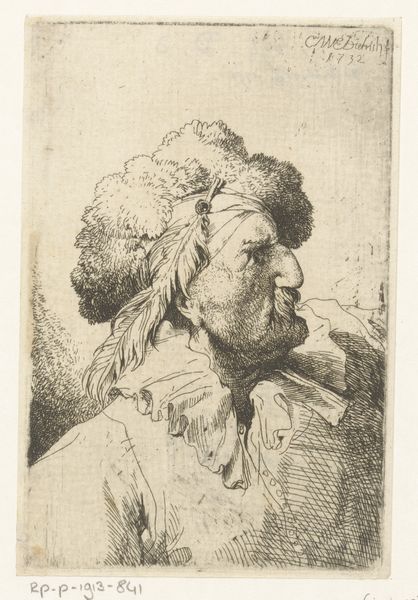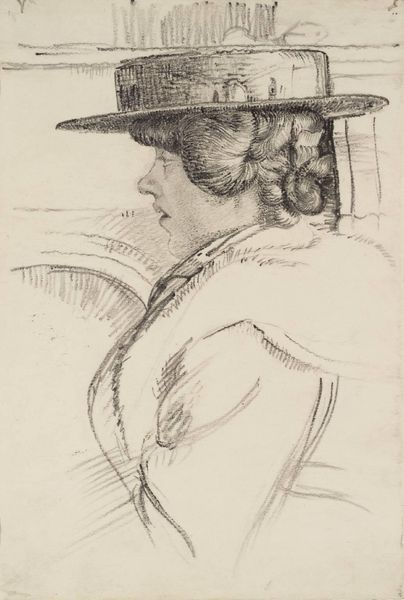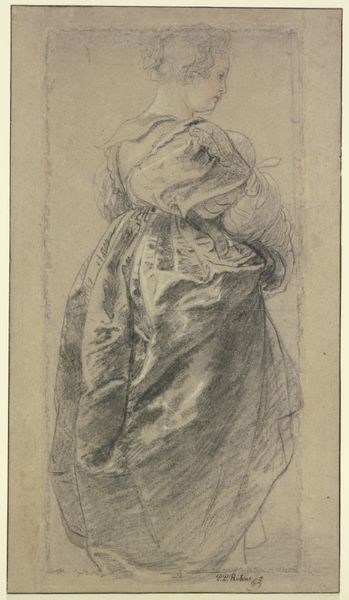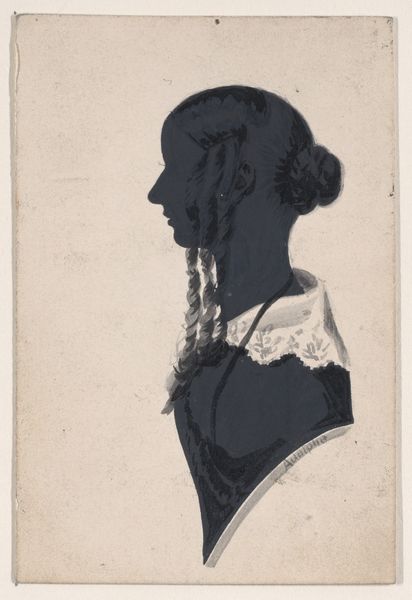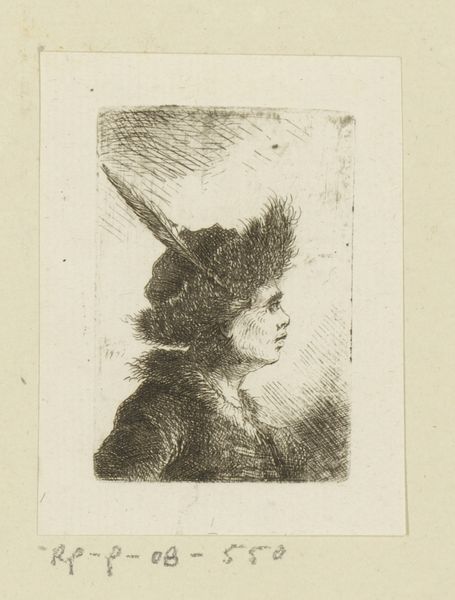
drawing, print, etching
#
portrait
#
drawing
# print
#
impressionism
#
etching
#
profile
Dimensions: Plate: 10 7/16 x 6 7/8 in. (26.5 x 17.5 cm) Sheet: 18 1/8 x 13 in. (46 x 33 cm)
Copyright: Public Domain
James Tissot made this print, “The Rubens Hat,” using etching, a process where a metal plate is covered in a waxy, acid-resistant ground. The artist then draws through the ground, exposing the metal, before immersing the plate in acid. This eats away at the lines, which are then inked and printed. The resulting image has a distinctive, slightly irregular line quality. Consider the social context: Tissot was a painter of modern life, and this print captures the elegance of Parisian fashion. But the image also reflects the labor involved in producing such finery. The hat itself, with its ribbons and plumes, would have been the product of skilled milliners, while the woman's dress suggests the work of dressmakers and seamstresses. By focusing on these details, Tissot reminds us that even the most seemingly effortless displays of style are rooted in specific processes of making, and a network of workers and skilled crafts. This challenges the traditional art historical emphasis on the artist’s singular vision, highlighting the collaborative and often unseen labor that goes into creating cultural artifacts.
Comments
No comments
Be the first to comment and join the conversation on the ultimate creative platform.
